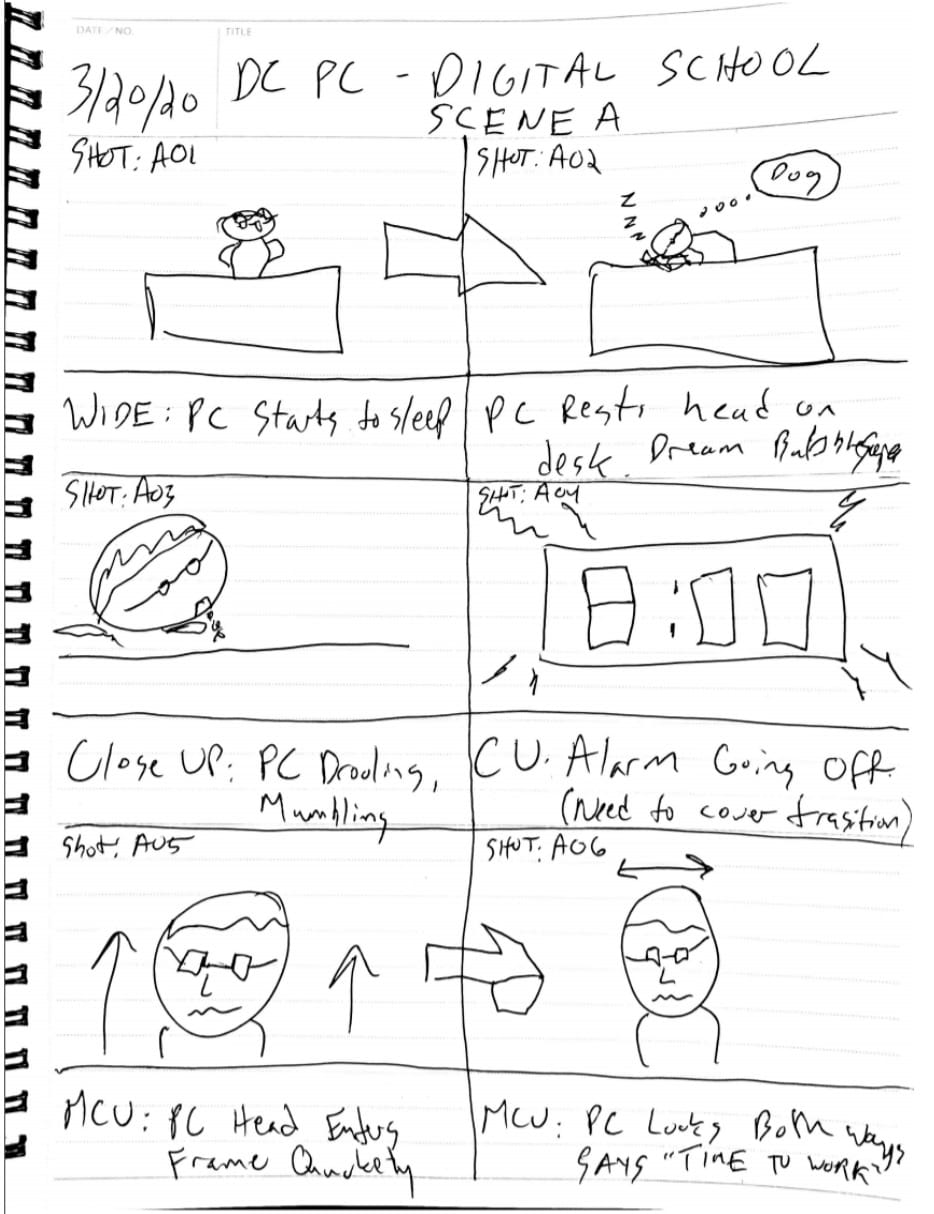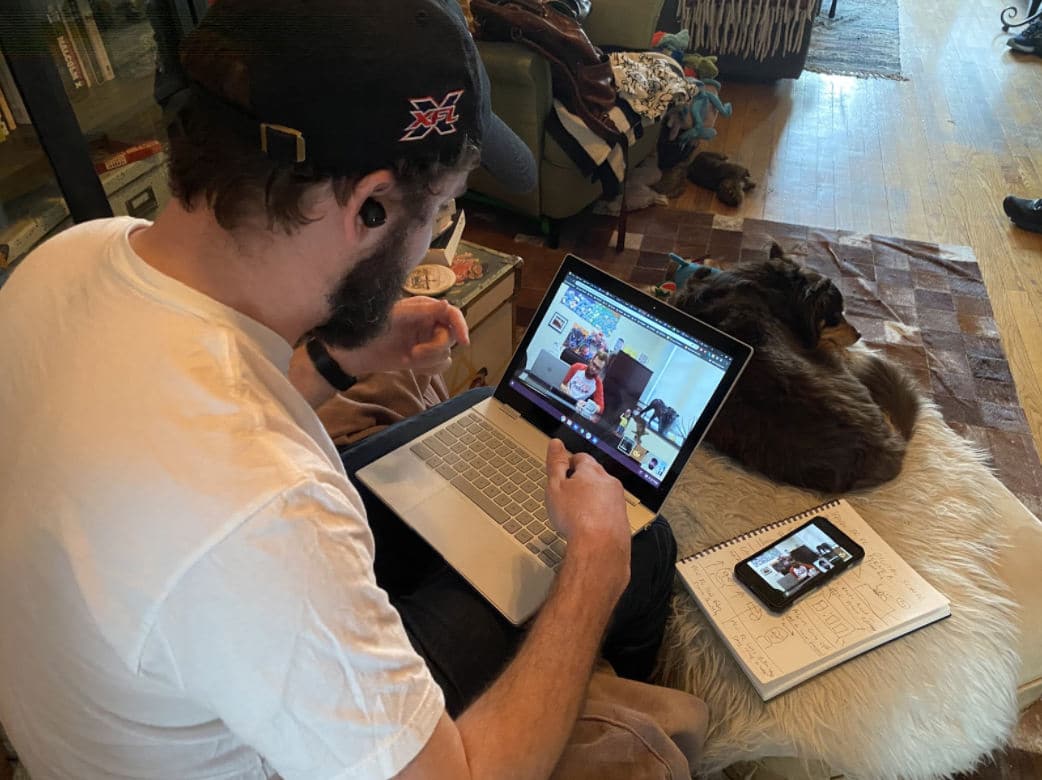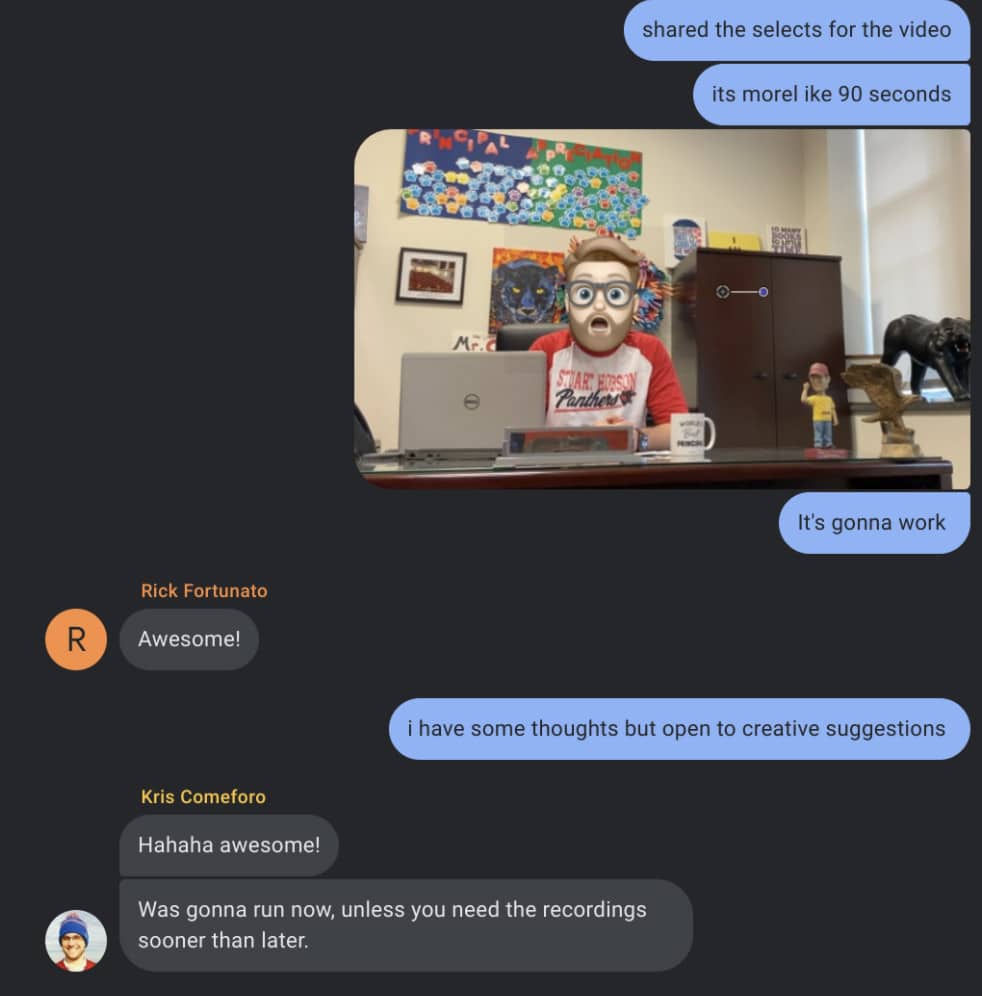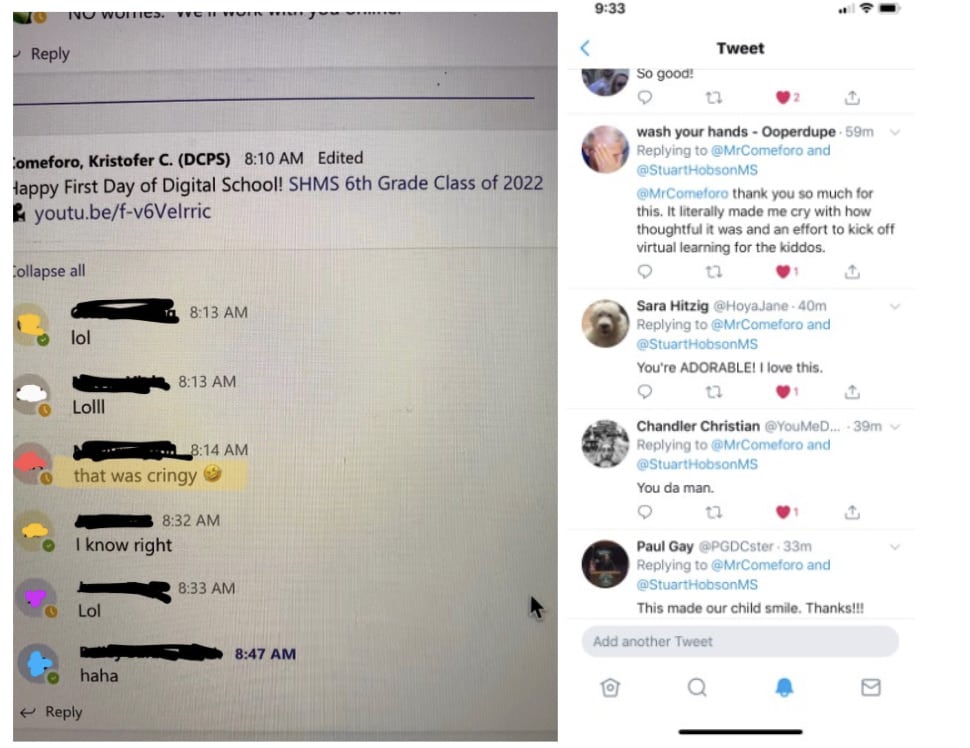On Virtual Directing
A ton of people have been posting great articles on the most effective ways to “Work from Home.” I especially recommend a post by my friend, Derek (a video editor and long-time WFHer) and an article by our partner Jeremy, of Ray Bloch, on the importance of storytelling and community in these trying times. These are two challenges I’ve been grappling over the past couple weeks, as a director and as part of Spot Creative. How do you truly WFH in our industry without the usual tools at our disposal? Luckily for me, an opportunity fell into my lap just a few days ago. One that proved to be enriching both personally and professionally.
Kris and Ricky are my lifelong friends. Both were in my wedding less than a year ago. Both were also some of the earliest members in my film crew: writers, actors, occasional grips nearly 25 years ago. As this global crisis continued to develop, we, like many of us, felt a pull to connect even more than usual, albeit in an entirely virtual way. We have a leaderboard for most time spent exercising, amount of food photos sent, beard growth and the like. Ricky is a lawyer and truly a great dude living in our home state of New Jersey. Kris is a principal of a Washington, DC school and also an excellent dude. His work is also going all digital/virtual in the days ahead. So when it came time for this transition, Kris asked if we could help him out. Ricky and I jumped at the chance to recreate those film crew memories from high school.
The idea: create a welcome video for Kris’ now digital school. The premise: Principal Kris falls asleep and wakes up as his Apple emoji avatar… so if he’s now digital, maybe the school can be too? (Kris was always the corniest of us.) The approach: Kris acts, Ricky writes, and I direct.
Not surprisingly, pre-production wasn’t all that different. I asked Kris to draft a document outlining what he wanted to achieve and the basic story points. Ricky filled out some of the dialog, I punched it up and added a level of cohesion. Once the script was in place, I drew up some storyboards (I promise, this level of artistic complexity is impressive for me) and shared them with the team.

The added challenge of this was the visual effects element of the piece, since we needed to account for the tracking of Kris’s animated head to his real body, both in blocking and in creating cut points. In addition to that, I’d be taking on the VFX work with rudimentary keyframing, so our toolbox was further limited. We had a video chat the night before filming so I could further understand Kris’s needs, convey my approach, discuss challenges and hammer out a schedule. This is a good time to point out that we had no budget and no crew. Kris would be shooting on this iPhone (the newest 11 Pro, which provides solid video resolution considering) and I’d be directing via the same video chat. Luckily, the school was already closed to students so Kris could safely produce this on his last day in the office before everything went digital.
Production, however, was very different. I set up a calendar invite like I would for any video chat, and this would be the proxy for Ricky and I being physically on set. Kris rigged his laptop directly next to the iPhone that he was using to film. The angle wasn’t perfect, but it worked. (I’d find a few eyeline issues later in post.) I set out my boards in front of me in Brooklyn, watching from my couch as Kris adjusted his framing in Washington, DC and Ricky watched on, as a combination of moral support and comic-relief from New Jersey. After I yelled “ACTION!”, we muted our microphones and watched Kris’s first take until I unmuted to yell “CUT!”

My first thought was “I forgot how limited Kris’s range was…” and my second thought was, “this system kind of works!” I talked Kris through his performance as well as the blocking to account for the digital image of his head that would be added during post production. He couldn’t overlap his hands over his face or have an important prop too close to his head in order to account for the space needed for his digital head overlay. And then Ricky would occasionally chime in with a script note or a sometimes helpful, always funny, suggestion.
Having the familiarity of a decades-long friendship helped with the short-hand style of communication that proves to be integral on-set, but directing via a video screen was not as challenging as I may have thought previously. I was able to convey blocking notes, emotional direction and timing similar to how I would if I were physically present onset, and the dual monitor setup with video chat worked well enough as a director’s monitor. I’m sure this process isn’t completely new to the industry, but I immediately saw potential for application with partners at Spot. Could this be a viable way to use technology to bring together various expertise of filmmaking into space one, albeit virtually? And was Ricky in a way a proxy for a new format of “on-set” partner/client participation as well? PS: The producer in me could also take pride in the fact we finished on time and on budget!
The post-production process was largely the same as we’d approach any project, excluding the fact that I did each step myself and the resources were extremely limited. Apologies in advance for the quality of the motion tracking! I cut my selects the same day once Kris had uploaded the footage. If I had access to the equipment available at Spot, the results would’ve been more refined, but as is the adage with our current times, we adapted, we improvised, and we overcame. He recorded the emoji head videos directly on his phone while listening to playback to get the timing right. Sync wasn’t 100% perfect but it moved the spirit and voice of the piece along. Once I had those recorded, I keyed, re-sized and keyframed that over the “IRL” (in-real-life) video.

Kris had to re-take one or two for timing, but a few hours later we had a full rough cut. Luckily, Kris and Ricky were easy partners with minor notes. I added music, SFX, and a few small digital effects, and we were done. From conception to final delivery in under 3 days, Kris would post it to Youtube and Twitter the following morning, the first day of digital classes for his students and parents.
The final product clearly has a kid-friendly and DIY feel. The camera is static, the audio is recorded from airpods and the visual effects are far from professional, but what I don’t think can be understated is the impact the piece has had on the students and parents. From nearly the minute Kris posted the video, people were commenting. The Youtube comments were eventually disabled because middle-schoolers can be a tough audience, especially in an internet comments section. But for the parents especially, this silly little video meant a lot during a difficult time. They appreciated the care and frankly just being spoken to directly, being remembered in the uncertain times. The smallest thing clearly meant a lot.

My friends and I created a feeling of connection amongst ourselves during the process, and the product provided connection to those DC families at a time when it’s needed most. We are all embarking on a new chapter of our lives as individuals and a community, one that is full of unknowns and challenges. We need these reminders to have hope and remember we’re in this together. We all want to keep working and living normally as soon as we can, but at least for now, we need to accept this new normal to learn and grow with it. Improvise, adapt, overcome.
The creative process was far from ideal from a professional viewpoint, but the resulting product was simple, it worked, and most importantly, it brought joy, a set of goals that can ring true more broadly in our imperfect world. And in an imperfect world, we need to keep seeking solutions that are simple, that work and that bring joy. It’s more important now than ever to keep connected (safely and virtually), and remember, we will get through this together.
- Ryan Savini, Creative Director
Producing in a Pandemic
There are so many aspects of being a producer that I enjoy, but when someone asks, I always say that it’s the combination of learning about companies, brands, products, and initiatives, while meeting and working with new people on each project. Unfortunately, during a global pandemic, that person-to-person camaraderie on a film, photo, or commercial set that we thrive on during our 15+ hour production days, is exactly what brings us into danger. Our industry has been halted in a matter of days, leaving brands and clients scrambling for new content, and, even worse, thousands of freelancers without work indefinitely. In a time when global couch-sitting has reached its peak and stay-at-home stamina is at an all-time low, what we need, now more than ever, are stories and storytelling that speaks to this moment. So, what do we do to keep that crucial content flowing to your screens?
We pivot. And, as filmmakers, we are damn good at it.
We’ve all had to pivot in our daily operations - when talent is late, a light bulb breaks during the best take, there’s not enough rigging equipment, catering is delayed, the EP is sick, the walkies are down, the budget is shrinking, the list goes on and on. There has never been a production day where each role didn’t face their own challenges, and that’s why we are all more prepared for these trying times than we think. Here is what we’re doing at Spot to produce in a pandemic:
-
- Develop “quarantine crews” of a few of your most trusted DPs and audio operators. If a client needs something filmed and doesn’t have the skills or equipment, you can send small 2-person crews who are pre-cleared. Once government mandated movement bans are lifted of course.
- Work with your global network. For 20 years, Spot has filmed all over the world and the US domestically, developing a trusted list of freelancers who we can hire in lieu of traveling a team.
- Use footage already owned, or buy stock. Car companies and other big brands are already doing this - use footage already shot for a previous campaign, and re-edit it with a fresh VO (recorded safely from home) to keep customers engaged, and to stay relevant to the current climate. Let your audience know that your company is informed.
- Connect to brand influencers. Influencers can be a helpful tool while larger production is halted. They have the skills and equipment to produce content from their homes, and can reach a new audience for your brand.
- Use graphics and animation. There are endless ways to produce engaging content without having any live action footage - come on, we’ve all cried over Toy Story. Use this time to try something new for your brand and engage with a new medium.
- Create virtual live events or a pre-produced program for your employees. Had to cancel that SKO but still need to get your employees pertinent information and get them excited for the year ahead? Don’t scrap the show entirely - we can reformat it for a virtual experience.
- Stay positive. Most importantly, stay positive, and think creatively on how to share that positivity with your employees, customers, and clients through media. We could all use a little light each day.
As we all adjust to the new “normal” (what does that word really mean these days?!), remember that we are all in this together - as creatives, as brands, as people. Storytelling is the root of our existence as humans, and we can’t let the fact that we can’t physically be together stifle the creation of new, interesting, dynamic, and versatile content. At Spot, we are problem solvers, we take a challenge and make it into something great. We look forward to returning to hectic set days of blood, sweat, and tears, but for now - let’s create together, while apart.
- Brittany Santagata, Head of Production

